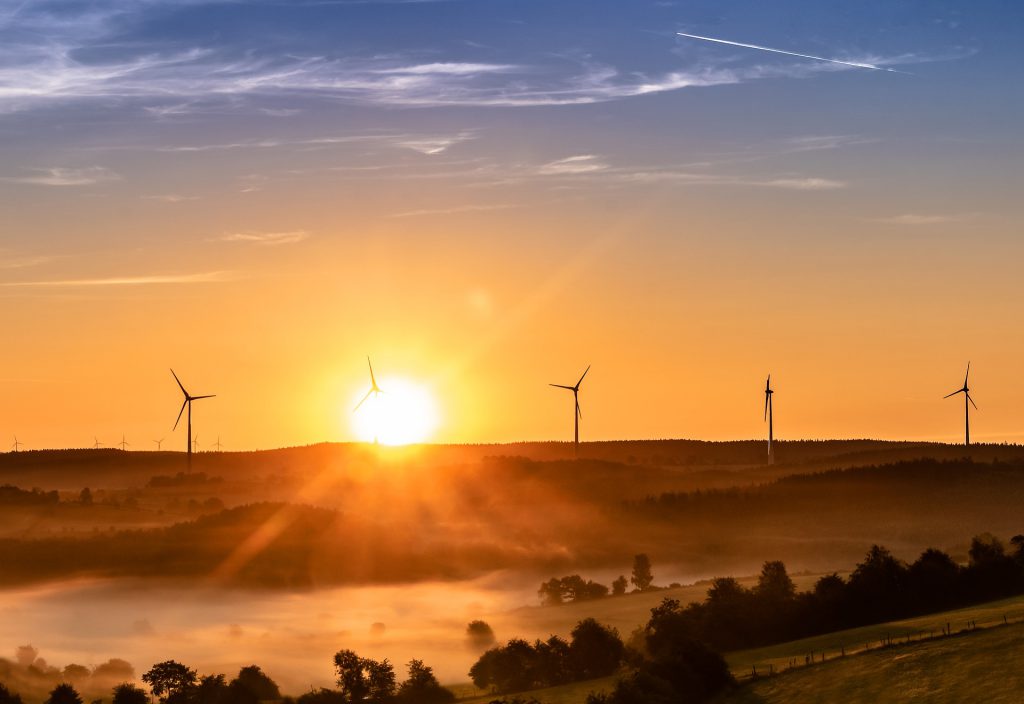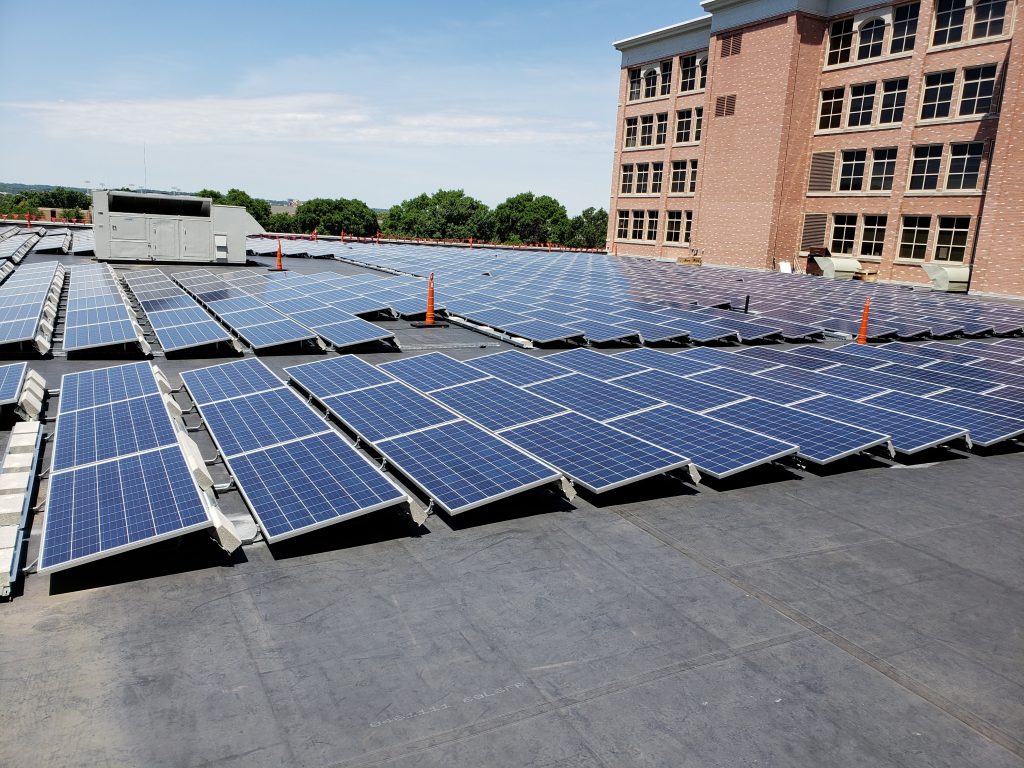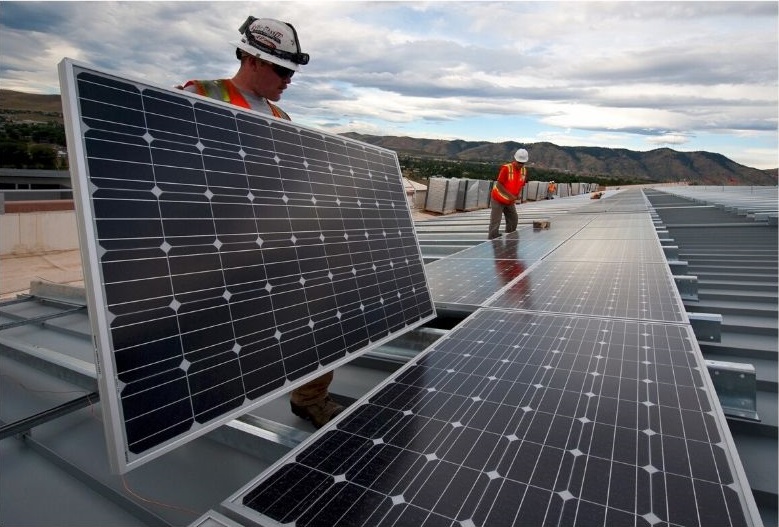To invest in energy efficiency or renewable energy? A question often pondered by building owners, design engineers, investors, energy engineers, performance contractors, and anyone in between who has a say deciding how to invest money to make the strongest financial and environmental impacts. In an ideal scenario, one can invest in both efficiency and renewable energy.
Integrating Efficiency and Renewable Energy
When it comes to the materials we use in everyday life, we have all heard the phrase “Reduce, Reuse, Recycle.” Well, there is a reason why reduction is mentioned first! It can be argued that the most sustainable energy source available is the energy that we never have to use.
Of course, there will always be energy used no matter how efficient a building is. But, in the energy spectrum, renewables reduce the cost for the electricity that must be used. Renewables also offer many other benefits, such as protection against fluctuating energy costs, incentives like federal tax credits, net metering, shaded parking lots… the list could keep going. And research confirms that investing in both energy efficiency options and renewable energy is a smart move. The American Council for an Energy-Efficient Economy (ACEEE) and the American Council on Renewable Energy (ACORE) collaborated in a 2007 study, reporting that investments in both energy efficiency and renewable energy are essential for the United States to create a secure energy future.

Creating an Energy Synergy
Think about it like this… If a boxer has a great right hook but a poor defense, he may win some fights but could easily lose to an opponent with a solid defense and a timely counterpunch. Combining two strengths to be stronger overall is called synergy. That is when the whole is greater than the sum of the parts. When energy efficiency and renewable energy are combined, they complement each other in a way that can maximize the total impact, both environmentally and economically. Consider this…
Right hook: An upgraded utility plan to reduce HVAC costs.
Left jab: Intelli-Hood®, Melink’s demand control kitchen ventilation system to further reduce HVAC costs.
And for the knock-out uppercut: A solar array made of super-efficient photovoltaic modules that meets the entire energy load of the building (taking into account the reduced energy usage from the previous energy efficiency measures).
And what’s even more of a win? By reducing the facility’s entire energy load, the upfront cost of the solar array is reduced. Plus, the quick payback as a result of the energy efficiency measures creates additional cashflow to help pay for a renewable energy source, like solar array (or even geothermal!).
Accounting for Energy Opponents
But what if? Let’s say that the uppercut was blocked in this scenario because, in many cases, the availability of renewable energy is limited due to geography and available space. For example, in the hills and valleys of Southern Ohio, wind energy is not going to be near as effective as compared to the plains of Northwest Texas.
Or, while solar performs well in Ohio, a building could have very limited space for an array. For the counterpunch here, one could implement new energy efficiency technologies and maximize efficiencies on existing equipment. Then, for the knockout, a smaller solar array like a parking canopy could still be very impactful.
The bottom line? There are many options at play when it comes to the powerful combo of energy efficiency and renewable energy. Together, this combo helps to reduce peak demand charges, which can be astronomically higher than off-peak charges. For example, if a new energy-efficient HVAC system is added to an office building, that building will still see high peak demand charges (although lower than before the upgrade) from the utility. However, capturing a renewable energy source, like wind or solar, can greatly reduce the impact of peak demand charges.

Winning the Fight on Climate Change
In summary, combining energy efficiency and renewable energy delivers the greatest environmental and economic benefits. Melink Corporation can help building owners, engineers, and designers with both energy efficiency and renewable solutions. We know this combination works from experience, too. With our own Zero Energy Building and another LEED Platinum building, Melink does not just talk the talk, we walk the walk.
Contact us today to protect your business from the volatile energy market, commit to sustainability, reduce utility costs, and fight climate change.


